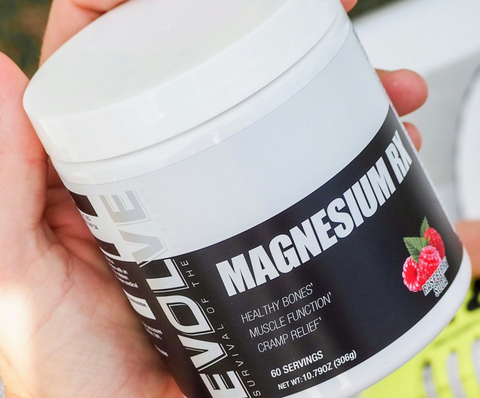With Christmas upon us, we look towards 2025…ahh, the New Year - a time of fresh starts, big dreams, and gym memberships or exercise kit gifted or purchased in a burst of motivation – this is THE year, right?
But let’s be honest: we’ve all seen the gym crowds that look like some WWE Battle Royale in January vanish by February as the enthusiasm wanes and determination disappears. So, if you’re serious about making 2025 your year for fitness success, then it’s time to go beyond that short-lived enthusiasm and create a plan that you can stick to. With this in mind, here’s how you can set yourself up for success and keep your momentum going long after that New Year buzz fades. Spoiler alert: this contains words like ‘plan’, ‘sticking the course’ and ‘work’.
Step 1: Set SMART Goals and look at these as immediate, medium, and long-term)
By SMART, we mean ‘Specific, Measurable, Achievable, Realistic and Timely’. But, before we dive into the “how,” let’s table the “what.” By this, I mean WHAT do you actually want to achieve?
Start by breaking your goals into three timelines:
Immediate goals (0–3 months)
- These are your quick wins to build momentum – baby steps if you will, but psychologically they will make a big difference
- For example: “I want to lose and keep off 3kg,” “I’m going to complete my first 5K run,” (we’ve got a book about that if you’re interested) or “I will commit to working out three times a week”
- Key is to keep these realistic – believe me, these small successes early on will fuel your motivation
Medium-term goals (3–9 months)
- This is where we’re really digging in, having built us some regularity and seeing some positive change. These should push you beyond the honeymoon phase of your New Year motivation
- Some examples: “I will improve my deadlift by 20%,” “I’m gonna turn that 5k into a half marathon,” or “I’ll have dropped a clothing size by the summer”
- Medium-term goals give you something to aim for as your initial buzz levels out and you perhaps plateau in your gains / goals
Long-term goals (9–12 months)
- This is big-picture stuff - aspirations that take sustained effort and where you’re saying to yourself ‘where will I be this time next year’
- Some examples could be: “Run a marathon”, “Achieve a specific body composition,” or “Build my overall strength and confidence for daily life”
- These long-term goals will give your fitness journey direction and purpose
Step 2: Track your data - and reassess it regularly
As the phrase goes: “If you’re not assessing, you’re guessing.” so it’s vital that you track your progress as it’s not just key to staying on course but it shows you clearly in black and white where you’re at. Here’s how to do it effectively:
- Take baseline measurements
- Weight and body composition (if that’s a focus). Smart scales are good to give you an overall picture of this. Don’t be disheartened by what you see – that’s your starting point
- Take circumference measurements (waist, hips, chest, arms, etc.)
- Look at some fitness benchmarks: for example, how many push-ups or squats can you do to failure? Or perhaps how far can you run in 10 minutes?
- Keep a photo log—progress pics often show what scales don’t and are more representative than what you see – or think you see – in the mirror
- Record your nutrition
- This is important, as how you fuel yourself can make the biggest difference to your achievements. Nearly every client I train tells me that they eat well – and many genuinely think they do – until you actually measure what’s going in. So, use an app such as MyFitnessPal or a diary to track what you eat for a week – and don’t leave out those sauces, spoons of sugar in drinks, or butter on that healthy baked potato either. Awareness is the first step to improvement
- Focus on balance, not perfection. Are you getting enough protein? Are you consuming too much sugar? Are you balancing your diet with healthy, wholesome carbs and fats? Are you drinking enough water? (I’d wager you’re not)
- Track your workouts
- Like your diet, keep a workout log—record weights lifted, distances run, or classes attended
- Seeing your progress in black and white is a huge motivator – you’ve beaten that Personal Best by X kg or you’re faster by X seconds in print or on a screen can make a big difference to your mindset and approach
- Reassess monthly
- There’s no point in waiting until the end of the year to see if your plan is working – you need to check and tweak your progress regularly
- It’s also important to celebrate your progress – you’ve done this and you should be proud of it!
- You should constantly look to fine tune things - tweak what’s not working, increase resistance, push yourself further and adjust those goals as needed
Step 3: Build Healthy Habits That Stick
Ultimately, motivation will only get you so far. To really succeed, you need to build habits. Here’s how to create them:
- Focus on the “Why”
- Why do you want to get fitter – why are you putting yourself through all of this? Is it to have more energy for your kids? Is it because you simply want to feel more confident in your skin? Or perhaps you’re looking to smash a personal record?
- It’s important you keep your “why” front and centre - it’s the focus that keeps you going when that motivation wanes. Stick a picture of what you want to look like on the fridge, put some markers on a calendar or simply give yourself a pep talk every day to remind you of why the grind matters
- Start small - and build from there
- Overhauling your life overnight is overwhelming – and often the fastest means to failure as it’s too much, too soon. So, start with manageable changes
- Some examples: add a 10-minute walk after dinner, swap one sugary drink for water, only drink at the weekends, or look to improve your lifts by 5kg
- Schedule it
- Treat workouts like appointments that can’t be disturbed, and you need to commit to. Put them in your calendar, let anyone else know it’s dedicated time (e.g. partner). Then make sure you honour them as you would a meeting. This is important stuff: your time
- Speaking of time, morning workouts can be game-changers – you’ve got the work done before your day has the chance to go awry with daily stuff, and there’s less time for excuses to creep in. Plus, it doesn’t half feel self-righteous when you’ve smashed out your routine before anyone else in the house is up – you’re pepped, full of energy and so, so smug at your achievements…
- Find accountability
- Whether it’s a friend, a coach (*cough* we know someone who can help there), or a fitness app, having someone (or something) to check in with keeps you accountable – there’s no hiding
- Working with a trained professional (again, we know someone on that score) ensures you’re doing the right things for your goals and can help provide that encouragement or kick up the arse you may need – both are available!
Step 4: Overcome the New Year slump
The “New Year, New Me” energy feels great in January, (as it does for everyone else) but what about when it fades? It will, so here’s how to keep the fire alive:
-
Celebrate those all-important small wins
Remember, EVERY step forward counts. Did you hit the gym twice this week instead of not at all? Then celebrate! (not by undoing all those gains of course) Those small wins build momentum, believe me
-
Mix It Up
Routine can be deadly, and boredom is the enemy; your body also gets into a rhythm and starts to coast – you need to keep pushing yourself. Try new workouts, up your targets, get a training partner, switch gyms, or maybe join a fitness class to keep things exciting
-
Focus on those non-scale victories
By ‘non-scale’ I mean those set of scales in your bathroom: progress isn’t always about weight loss, but how you FEEL in yourself. Maybe you’re sleeping better, feeling less stressed, lifting heavier or just have an overall better general demeanour. They all count.
-
Be kind to yourself
So, you missed a workout. You fell off the wagon on a friend’s birthday. You had an off day with food and went to town. It’s not the end of the world and long-term won’t derail your progress; it’s important to keep things in perspective and also to enjoy life. Unless you’re a Tibetan Monk living and working under a strict lifelong routine. But I guess even they have choices, probably. Just remember, progress is about consistency, not perfection.
Step 5: Seek support and expertise
You don’t have to go it alone – a professional can save you time, frustration, and effort by tailoring a program to your needs and goals. Here’s what a coach like me can offer:
- Expertise: Programs designed around your goals and abilities
- Accountability: Someone to check in with, celebrate wins, and importantly, keep you on track
- Adaptability: bespoke plans that evolve with you as your fitness journey progresses
Final thoughts: let’s make it your year
Being fit or in shape isn’t about chasing someone else’s ideal; it’s about finding what works for you—what energises, motivates, and challenges YOU. And, as you plan for 2025, just remember: progress is a marathon, not a sprint; it’s something that you don’t just want to achieve but sustain. So, whether it's a beginner weight training routine, you want to combine weight loss and weight training, you're looking for quality over 50s workouts, make sure you set clear goals, build those strong habits, and surround yourself with the tools - and people - to help you succeed.
The best time to start was yesterday. The second-best time? Well, that’s today. Here’s to a stronger, healthier you in 2025!
What are your fitness goals for the new year? Let’s make them happen! 👊




